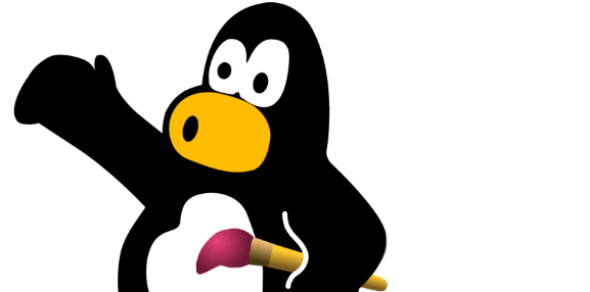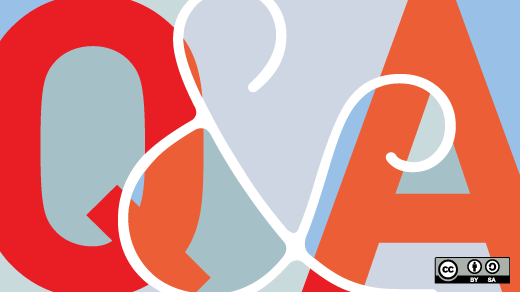Bill Kendrick created Tux Paint in only a couple of days. A friend asked why there wasn't a free and open source drawing program for kids, something like GIMP. Bill chuckled, knowing that many adults have a hard time learning how to use GIMP, much less kids. He replied, "I can probably put something together."
That was 11 years ago (the first beta was releasted in June 2002). Today, Tux Paint is used across the globe, in homes and at playdates for kids but particularly in the classrooms of underfunded schools. A new study this year by the Council on Foreign Relations reports that U.S. has slipped ten spots in both high school and college graduation rates over the past three decades. Reasons for this stem from funding practices for elementary, middle, and high school systems that are based on property taxes.
More from the article:
The real scourge of the U.S. education system—and its greatest competitive weakness—is the deep and growing achievement gap between socioeconomic groups that begins early and lasts through a student's academic career. Wealthy students are achieving more, and the influence of parental wealth is stronger in the United States than anywhere else in the developed world.
—Rebecca Strauss, associate director for CFR's Renewing America publications
Tux Paint is a simple program with profound implications because it's free and easy to use. Most recently, a teacher at an underfunded school in an economically depressed area used the crowdfunding tool, EdBacker, to put together a summer enrichment course using Tux Paint. Brenda Muench says that in her 16 years of teaching, there has never been an art program for kids at Iroquois West Elementary School.
As resources become more scarce, Bill has noticed school systems are much more flexible these days when it comes to the kind of software they will run, and educators all around over the globe are chatting with each other about the resources they use.
Read more in this interview.
How did you create Tux Paint?
I used the Simple DirectMedia Layer (libSDL), which I had been using for my games for the last 2-3 years (prior to that, I struggled using Xlib), and based on that had a combination of limitations and capabilities that worked out well: only one window (that keeps it simple) and the ability to do full-screen (which helps keep kids from messing up the desktop).
A side benefit was that Tux Paint could be pretty easily ported to Windows,Mac OS X, and other platforms—and that's exactly what happened. I didn't imagine I'd make any kind of impact on those platforms, considering there were undoubtedly countless other programs for kids, including the popular and long-running (since the early days of Mac) Kid Pix. However, what didn't occur to me right away was that, since Tux Paint was open source it became an inexpensive (read: free) alternative to commerical apps for ALL platforms, not just Linux. That turns out to be very helpful to schools, which sadly, are notorious for lacking funds.
How is the interface easy-to-use for kids pre-school to K-6?
There are a variety of things that I tried to do to keep the interface easy to use:
- big buttons that don't vanish, even when you're not using them
- all actions have icons, as well as text
- Tux the Penguin provides some cues, info, and status at the bottom
- sound effects, which are not just fun, but can provide feedback
- a single kind of pop-up dialog, with never more than two options (ex: "Yes, print my picture", "No, go back")
- no scrolling
The reason Tux Paint doesn't ask you: "What size do you want your picture to be?" is because when kids sit down with a piece of paper to start drawing, they don't cut it down to size first. Most of the time, they just start, and if you ask them to decide how big their paper should be before drawing, they get mad that you're not just letting them draw!
Fun sound effects and an encouraging cartoon mascot are important for kids, but do adults use Tux Paint?
Yes. I've had some suggest that they'd use it more if there were a way to disable the Tux penguin. I understand how annoying children's software can be, so I made a "no sound" option available from day one.
What great stories have you heard over the years due to the program being free?
A children's hospital put together a kind of arcade cabinet kiosk running Tux Paint with special controls (instead of a mouse).
First graders used video conferencing and screencasts to teach kindergarteners at another school how to use Tux Paint. These same schools also use Tux Paint to create imagery for stories that the kids collaborate on. Then they make videos by narrating the story.
I post blurbs of these stories and other reviews to encourage other educators to try and use Tux Paint: Yes, this crazy, free, 'open source' stuff is great for schools! Of course, now over a decade later, it's not an uphill battle to explain what OSS is and what its benefits are, anymore—which is great.
Do educators use Tux Paint to teach subjects other than art?
Yes, definitely, and that's exactly what I imagined.
I didn't design Tux Paint to be a tool that's only used for teaching art, I designed it to be a tool like a piece of paper and pencil. Some schools use it to create narrated storybook videos. Other schools use it for counting and math.
Ironically, these days, after being exposed to things like Mr. Pencil Saves Doodleburg on my son's Leapster Explorer (which, by the way, runs Linux!), I'm beginning to think Tux Paint needs some additional features to help teach concepts about art and color. Or at least a nicely done set of curricula.
How do teachers, school admin, parents, or interested contributors get involved with Tux Paint?
Send a message to Bill to contribute to Tux Paint on Andriod.
There's a mailing list for users (parents, teachers, etc.) and a Facebook page, but for the most part there isn't a lot of action there because it's just so easy to use and runs on a variety of platforms.
We need help with:
- bug hunting / QA testing / bug fixing
- translations
- artwork
- feature ideas
- documentation
- curriculum
- spreading the word / awareness
- ports to other platforms








2 Comments